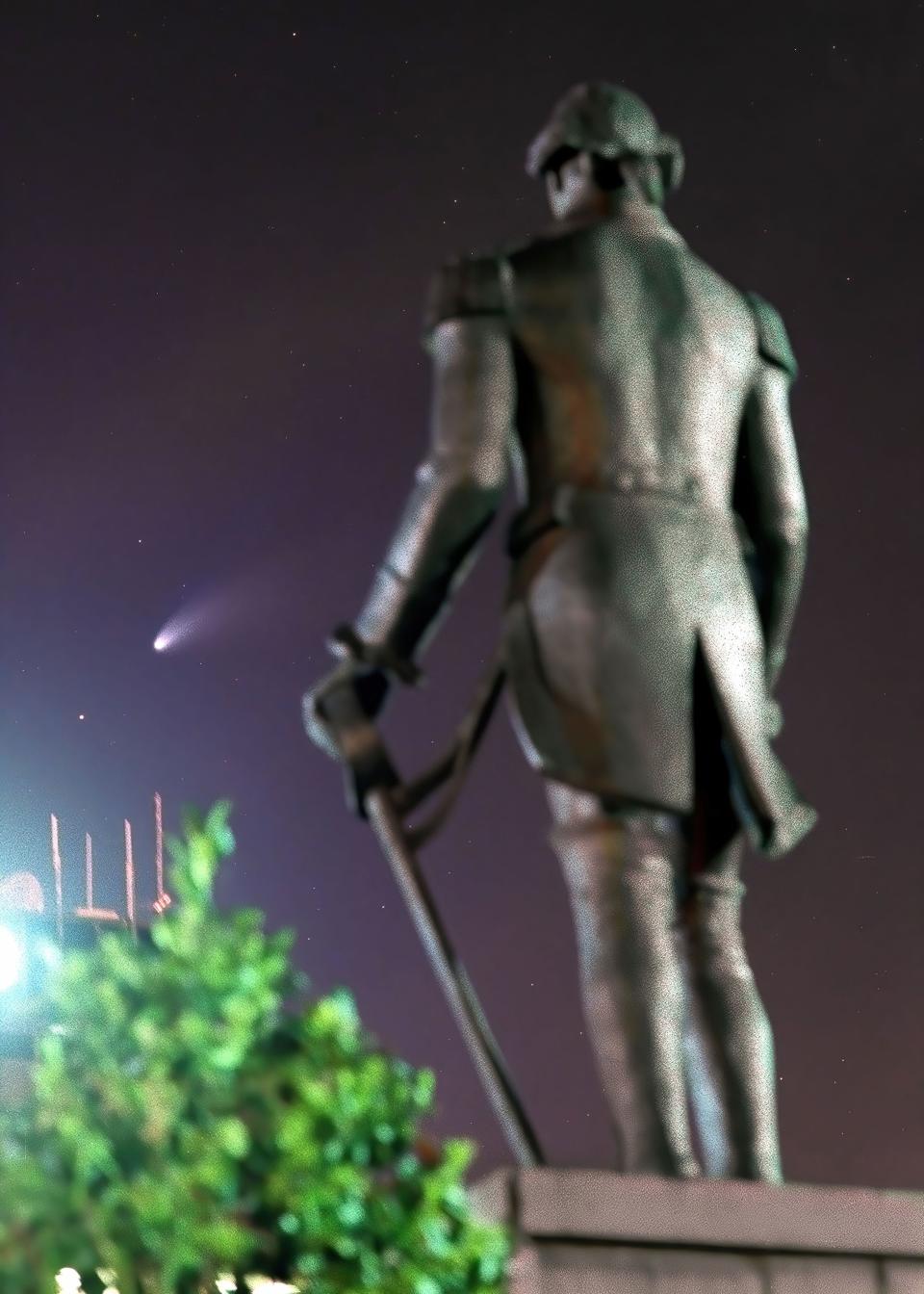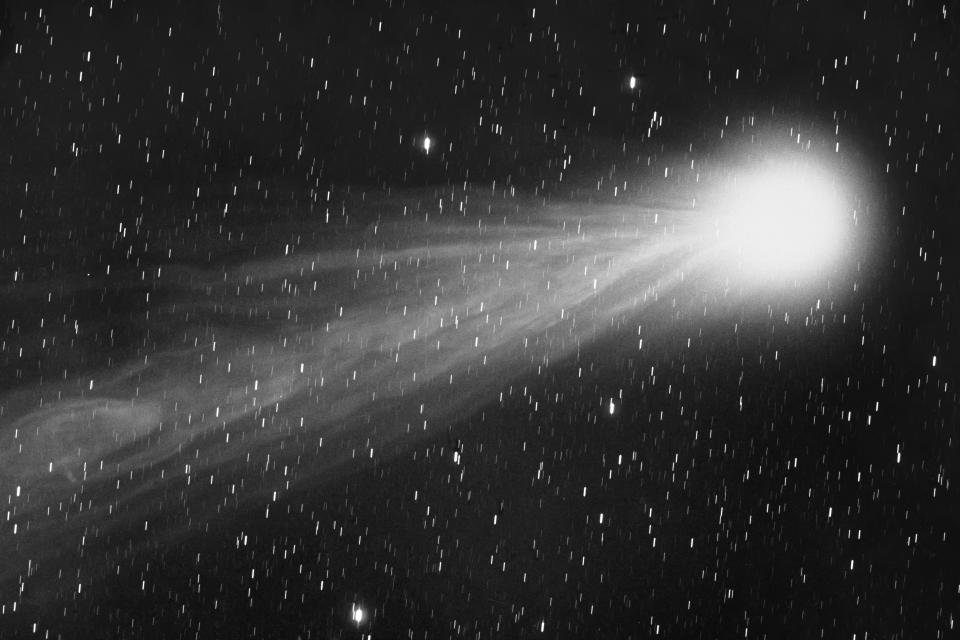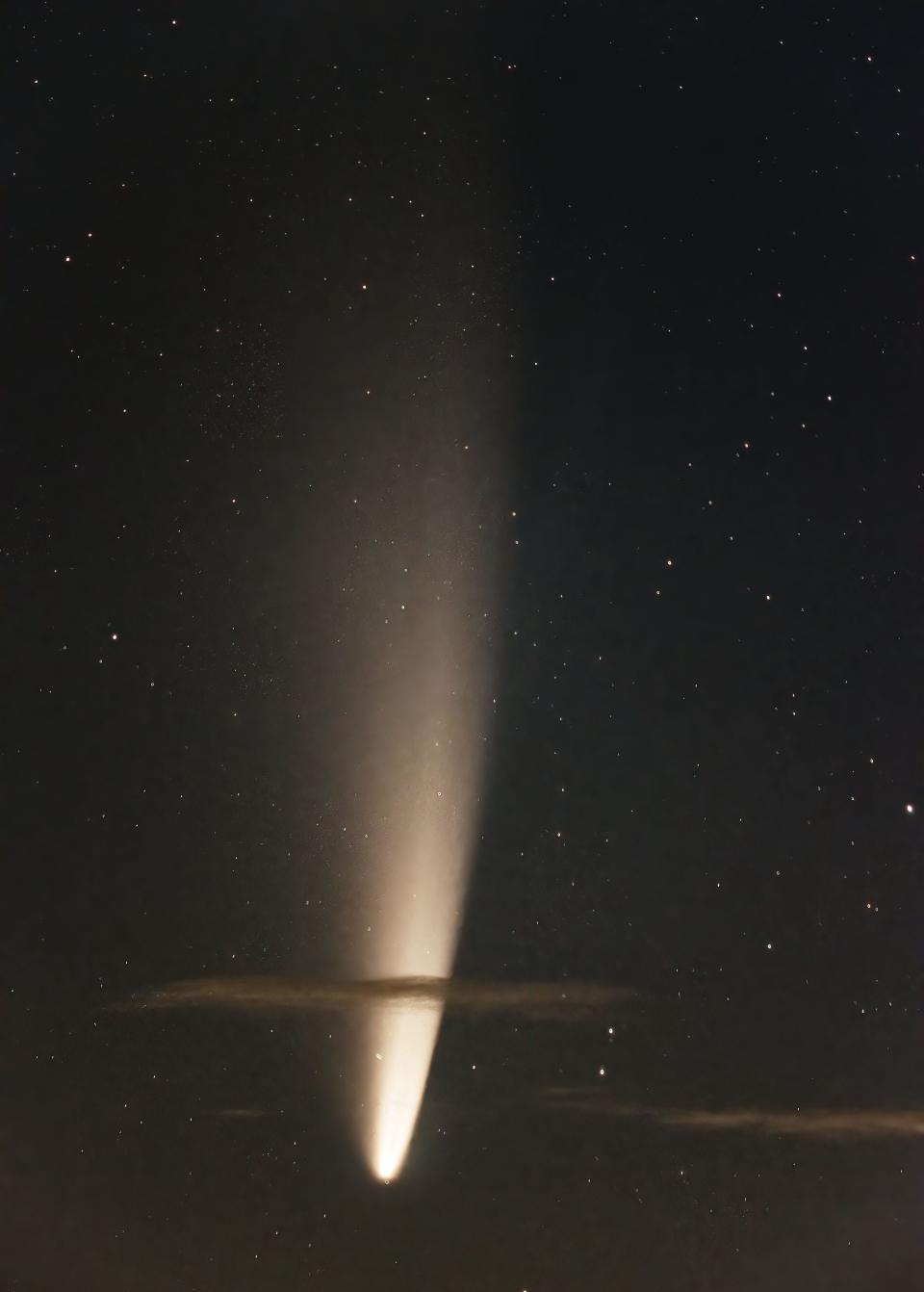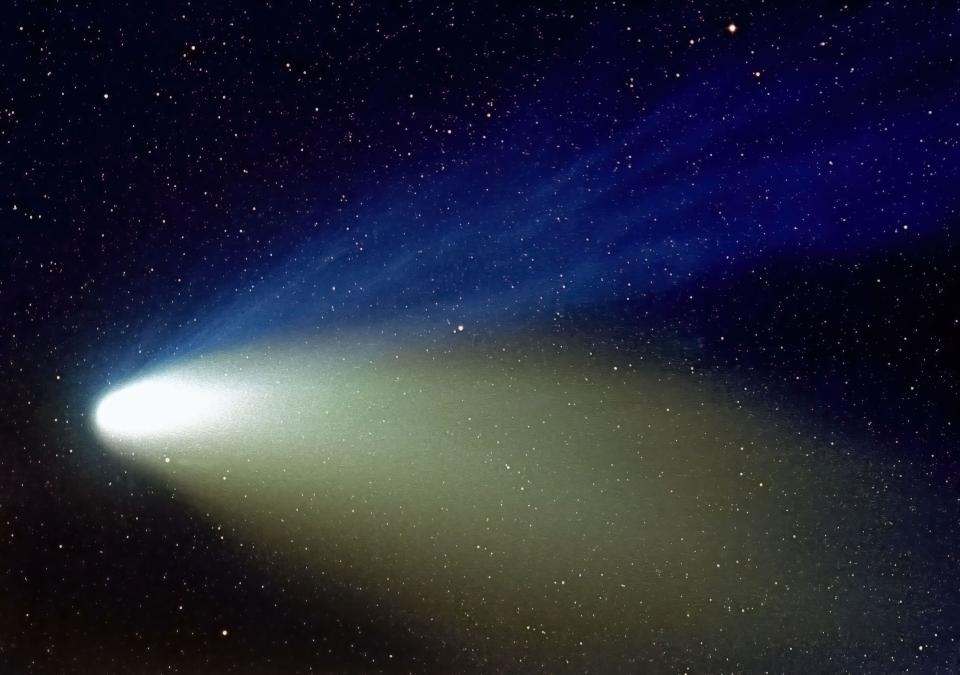Backyard Universe: Could an inbound comet rival the famous Hale-Bopp for brightness?
Even though so much of what we see in the night sky is predictable, comets, those icy relics left over from the earliest days of our solar system, still offer lots of uncertainty.
Once a new comet is discovered it's usually only hours or days before the comet orbit is calculated and we then know exactly when and where it will be seen in our skies. It's somewhat less certain as to just how bright and interesting-looking a given comet will become.
Comets are balls of "dirty ice" in orbit around the sun. As they approach the sun their ices evaporate, releasing gas and dust that form a comet's signature tail.
Will an inbound, newly discovered comet be bright enough to become an obvious object in the sky, or will binoculars or a telescope be needed for it to be even detectable in dark pristine skies?

Take Comet C/2023 A3 (Tsuchinshan–ATLAS) discovered on Feb. 22.
Around its discovery, this "new" comet was more than 600 million miles away from us and required a large telescope to detect. But in October 2024, the comet will be only about 44 million miles distant and could become an extraordinary-looking cometary visitor even to our unaided eyes.
Early in October 2024, Comet C/2023 A3 (Tsuchinshan–ATLAS) will appear too close to the sun to be easily seen, but after about Oct. 14, it starts to appear in the southwestern evening sky.
In October of next year, if the most optimistic predictions come true, C/2023 A3 (Tsuchinshan–ATLAS) could become an obvious naked-eye comet that could be as bright as Comet Hyakutake in 1996 or Comet Hale-Bopp in 1997.
That could mean it would be visible even from light-polluted city skies and could show a long sweeping tail if observed from dark sky sites.

Revisiting great comets of the 1990s
It's been over a quarter century since a really bright comet appeared in northern hemisphere skies. The summer of 2020 offered a moderately bright comet, but Comet NEOWISE fell short of being a striking, obvious night sky object to casual observers in all but the darkest skies.
But back in March 1996, a newly discovered comet named Hyakutake crawled across our evening sky for much of that month, sporting a tail so long you had to turn your head to take it all in if you went to the trouble of observing it from a dark site.
Much of Hyakutake's brightness came from the fact that it passed so close to us — only 9.3 million miles at its closest.

Then, just a year later in 1997, Comet Hale-Bopp appeared first in our predawn skies and then in the early evening.
Hale-Bopp didn't come as close as Hyakutake, but it was a very large comet and formed two distinct tails, one of gas and one made of dust as it swung closest to the sun in late March 1997.
Hale-Bopp was the most observed comet in human history owing to both its size and prominence in the sky and the fact that it remained at naked-eye brightness for about a year.
I recall easily seeing and photographing Hale-Bopp hanging in the sky over the bright lights of downtown Fayetteville in March 1997.
Both Hyakutake and Hale-Bopp were predicted to become very special-looking objects, and history tells us those predictions were correct, but there are also times when other comet predictions just didn't hold up. Even though we know exactly where they will be and when they will be most visible, how impressive they will appear is almost always suspect.

Cometary disappointments
In 1974 newly discovered Comet Kohoutek was billed as the "comet of the century" but its peak brightness came when the comet was too near the sun to be seen. By the time it reemerged from the sun's glare its brightness was way below the predictions, and most of the public had problems seeing it at all. Now, almost 50 years later, Comet Kohoutek is known as perhaps the most memorable "celestial disappointment" of the century.
In the early 1990s, Comet Austin was also a top-billed comet attraction, but during April 1990, when the comet was supposed to be ramping up in brightness, Comet Austin was 6 magnitudes fainter than some predictions. During May 1990, Comet Austin was briefly visible to the naked eye from dark sites.
So ... even though we're a year and a half out from the predicted peak of inbound Comet C/2023 A3 (Tsuchinshan–ATLAS), its appearance on October evenings next year gives us some, if cautious, optimism that a special visitor is on the way.
Free public viewing
Even though Comet C/2023 A3 (Tsuchinshan–ATLAS) won't be visible, local amateur astronomers with their telescopes have scheduled a free public viewing on Saturday evening, April 22 at the Jordan Soccer Complex at the end of Treetop Drive off Ramsey Street.
The 7-9 p.m. session, which is canceled in case of cloudy skies, will offer telescope views of the crescent Moon, Venus and other evening sky objects. Contact Methodist University Geology Professor Dr. John Dembosky at jdembosky@methodist.edu for more information.
If you have a question about astronomy send it to Backyard Universe, P.O. Box 297 Stedman, NC 28391 or email johnnyhorne937@gmail.com.
This article originally appeared on The Fayetteville Observer: C/2023 A3 (Tsuchinshan–ATLAS) will be in skies October 2024

